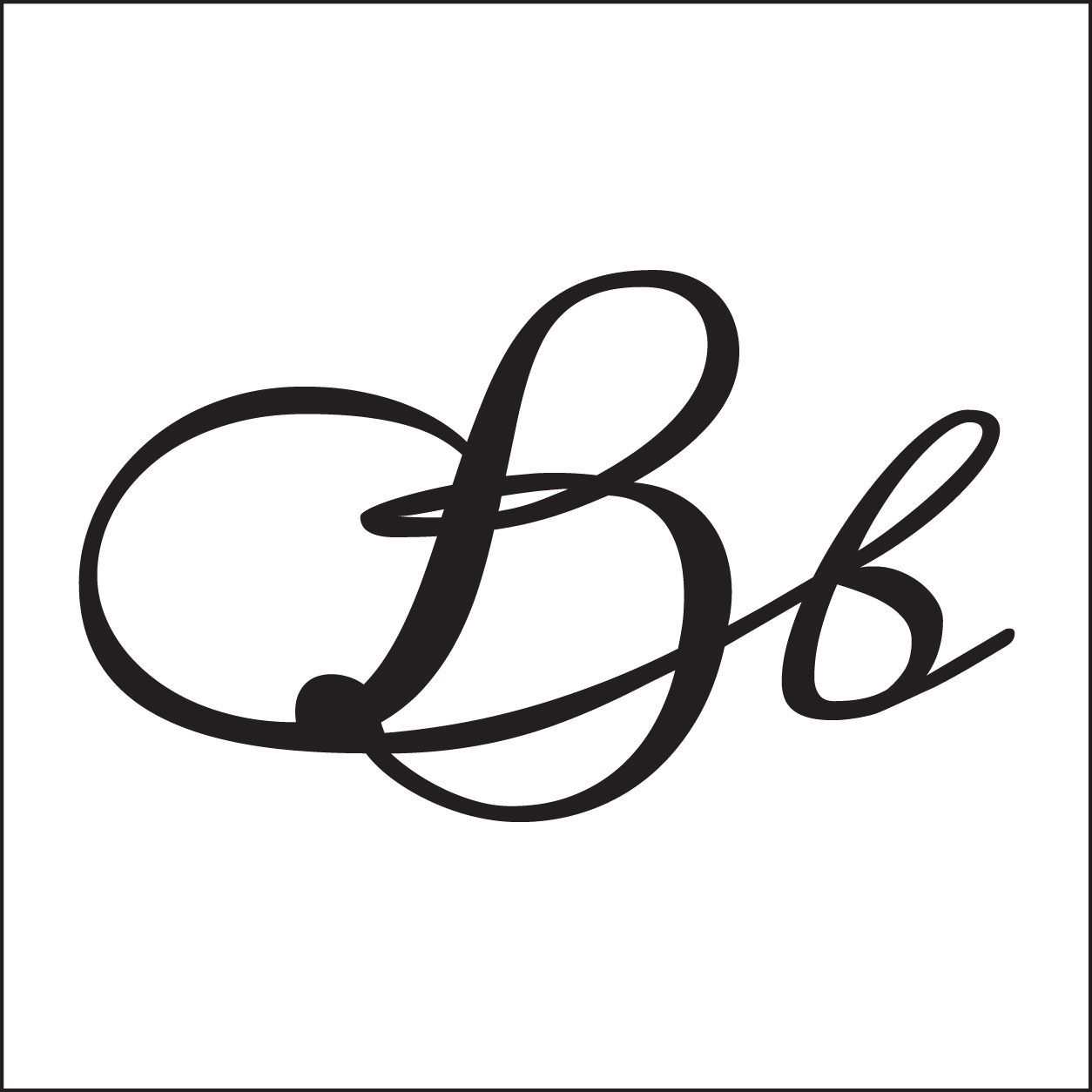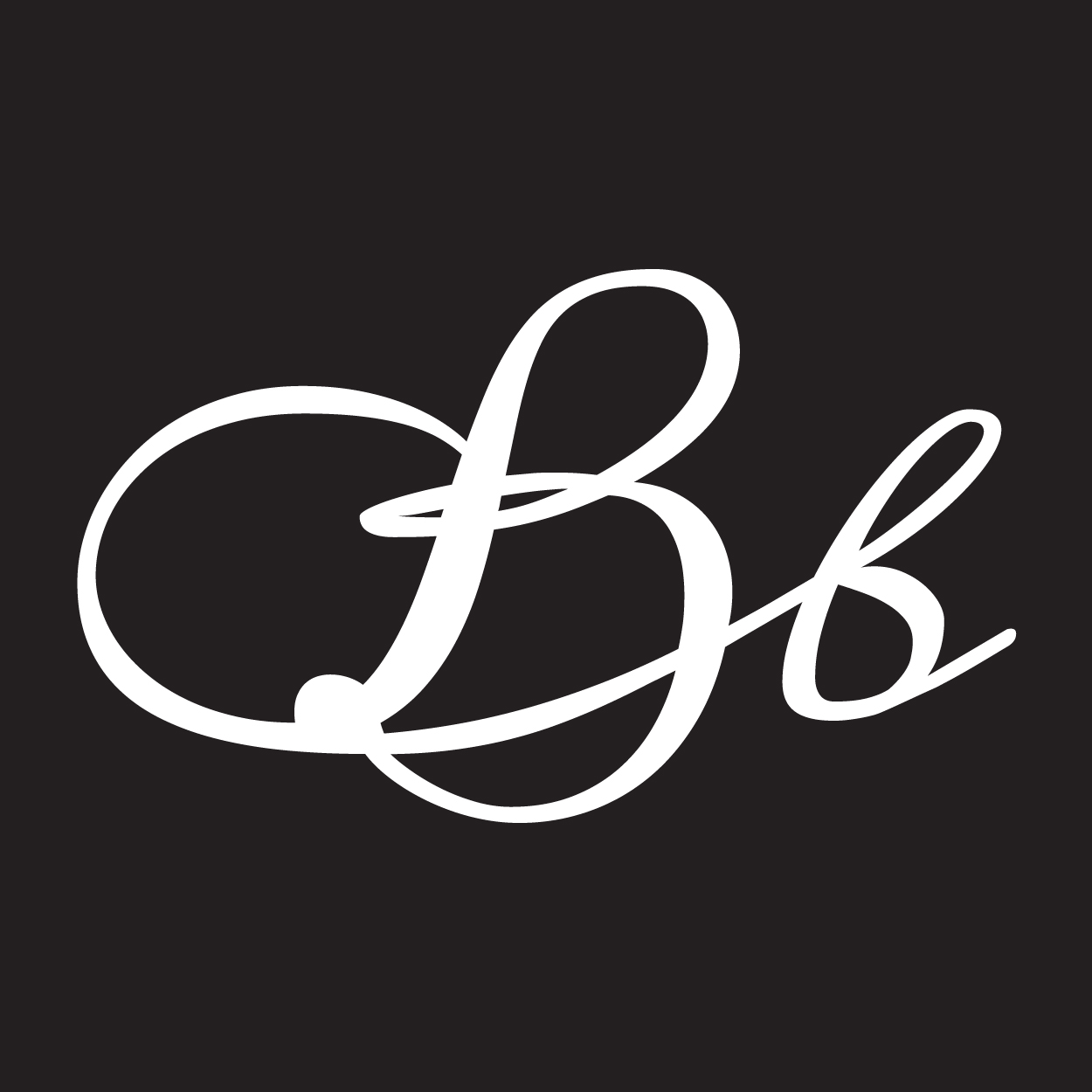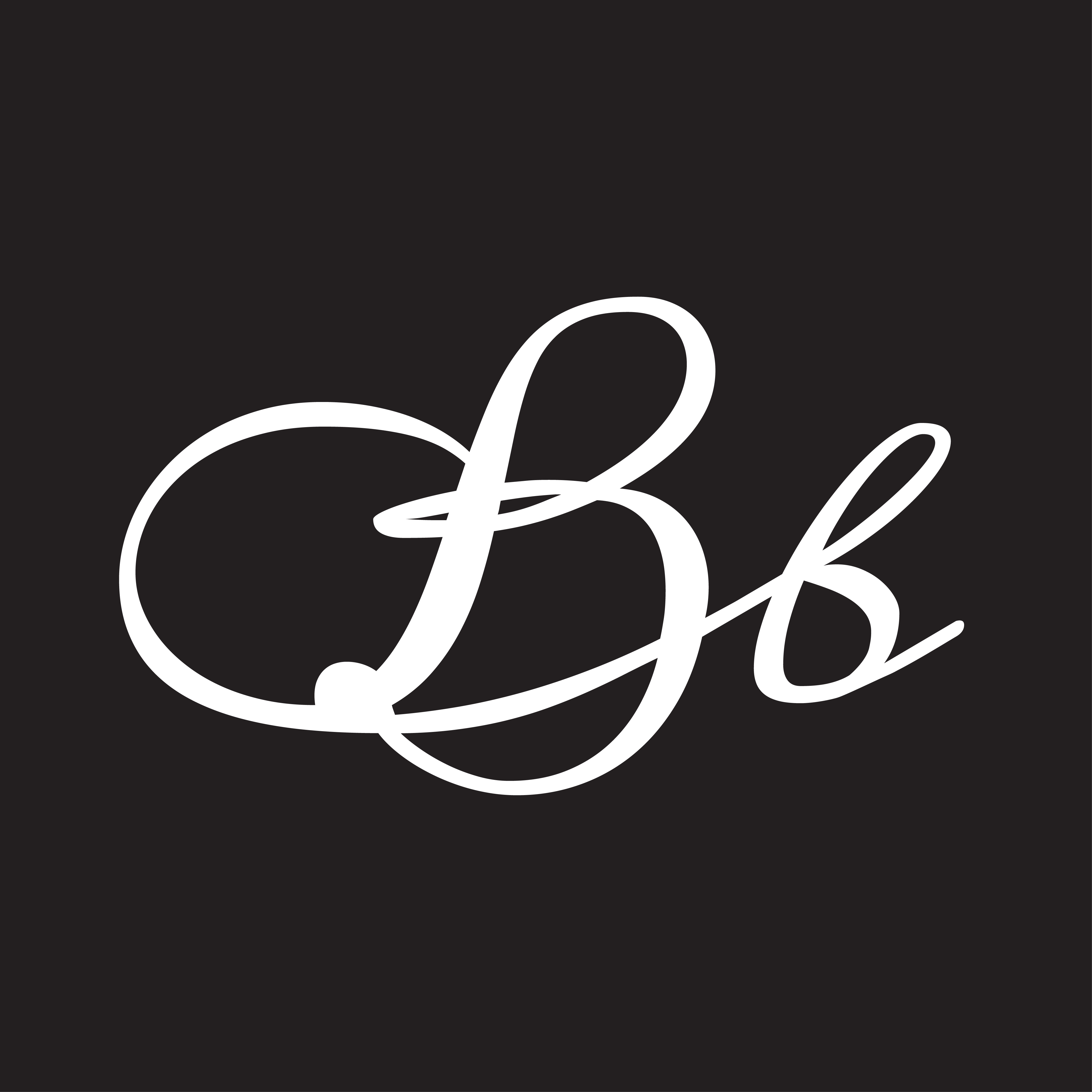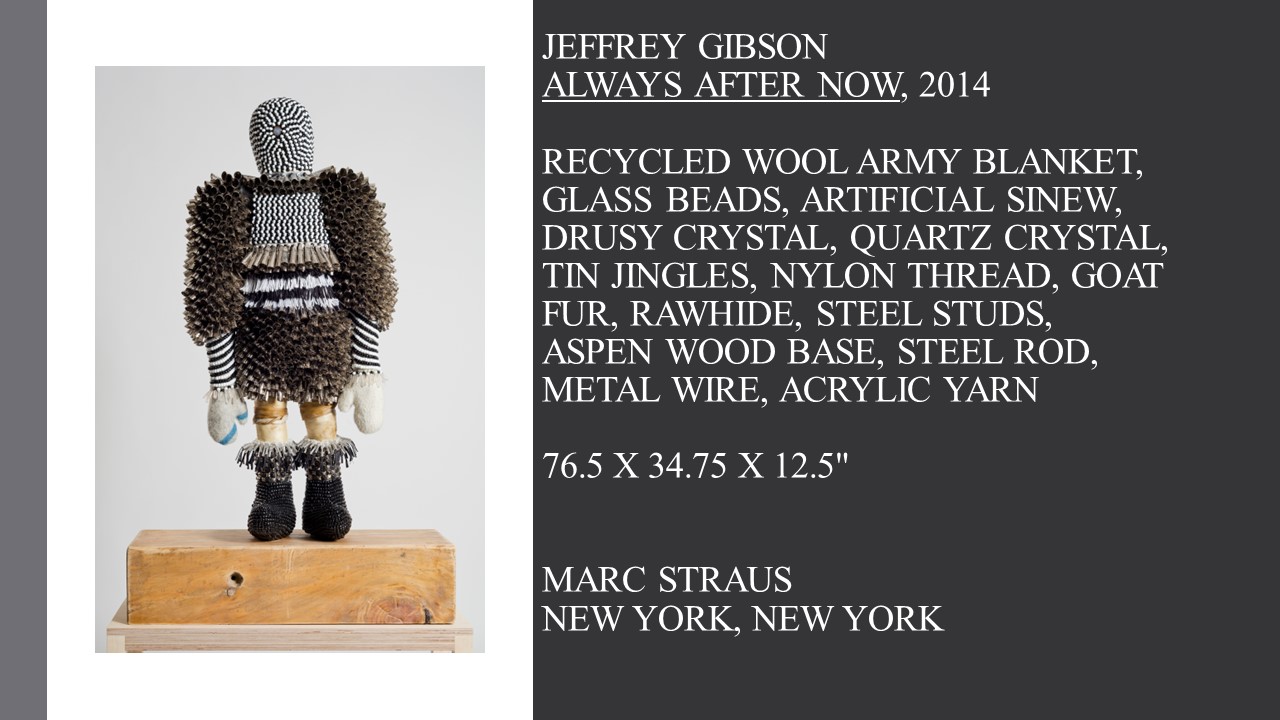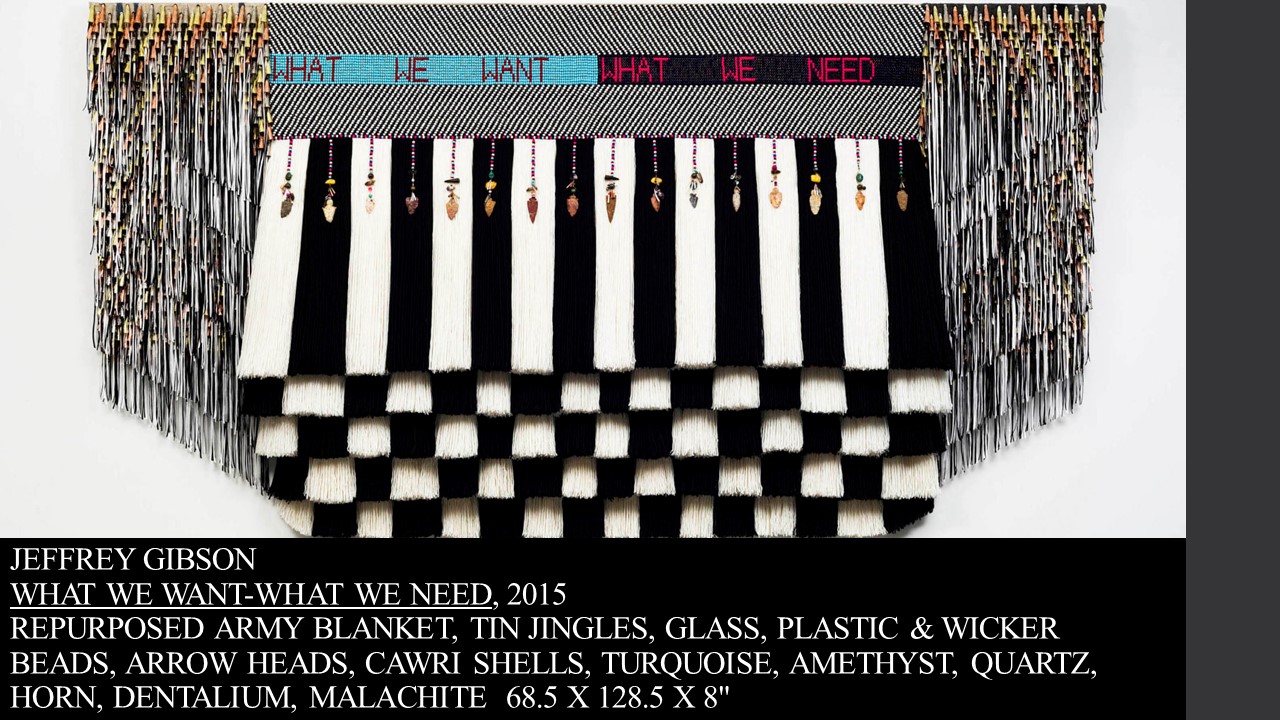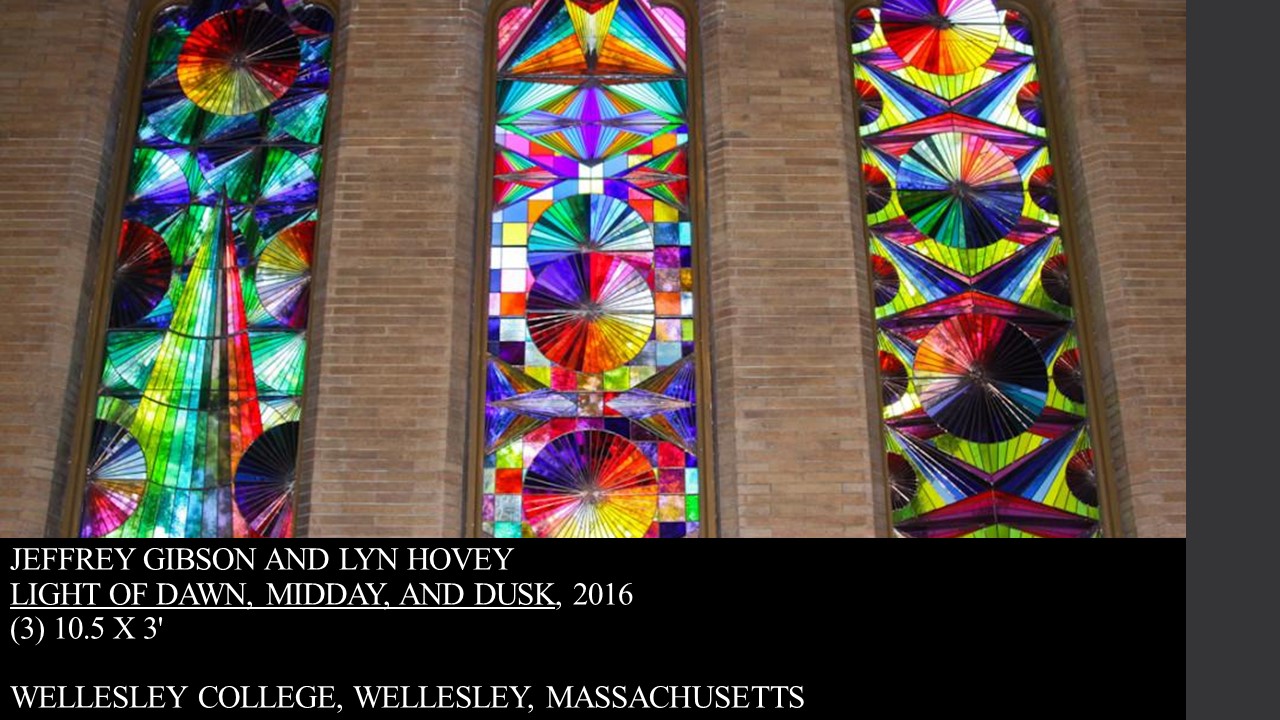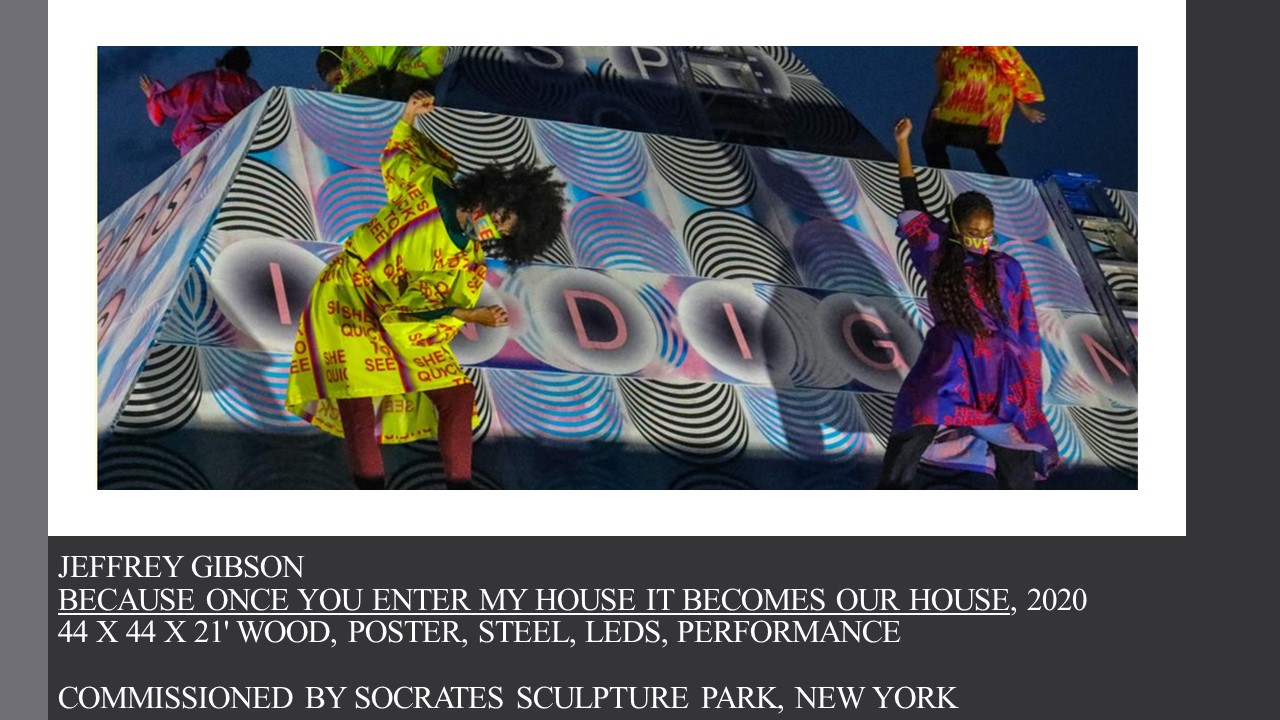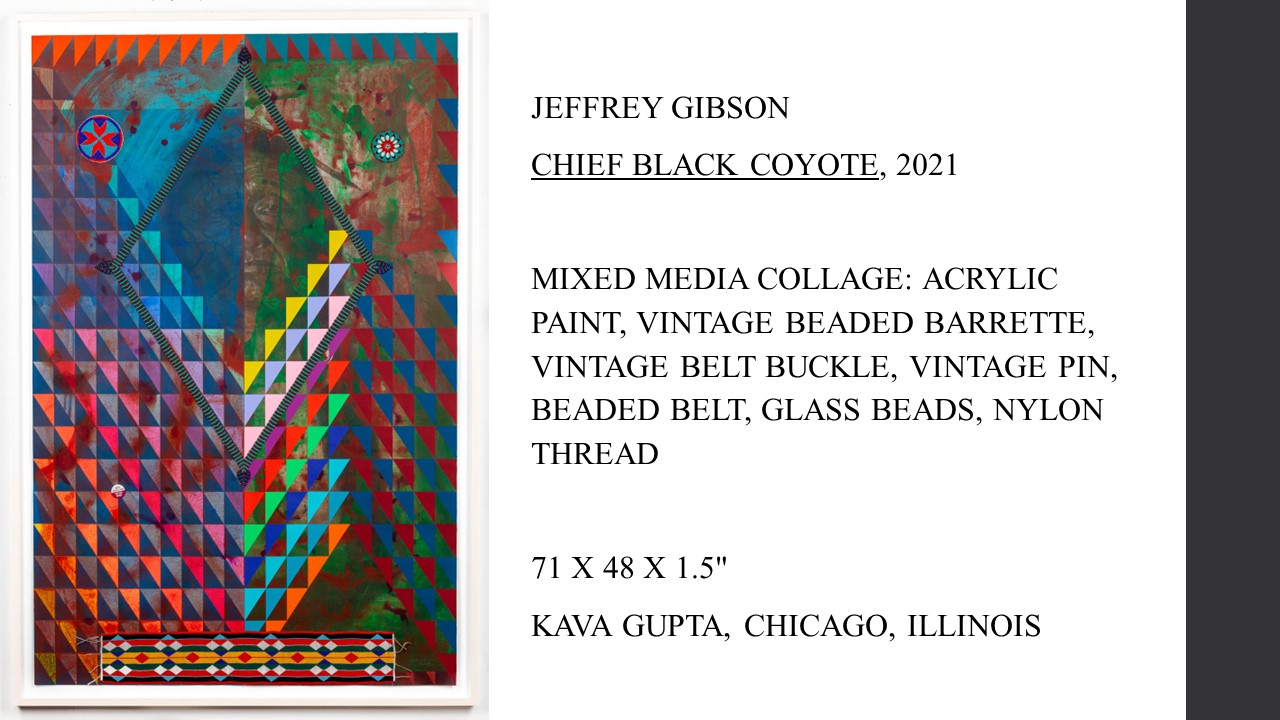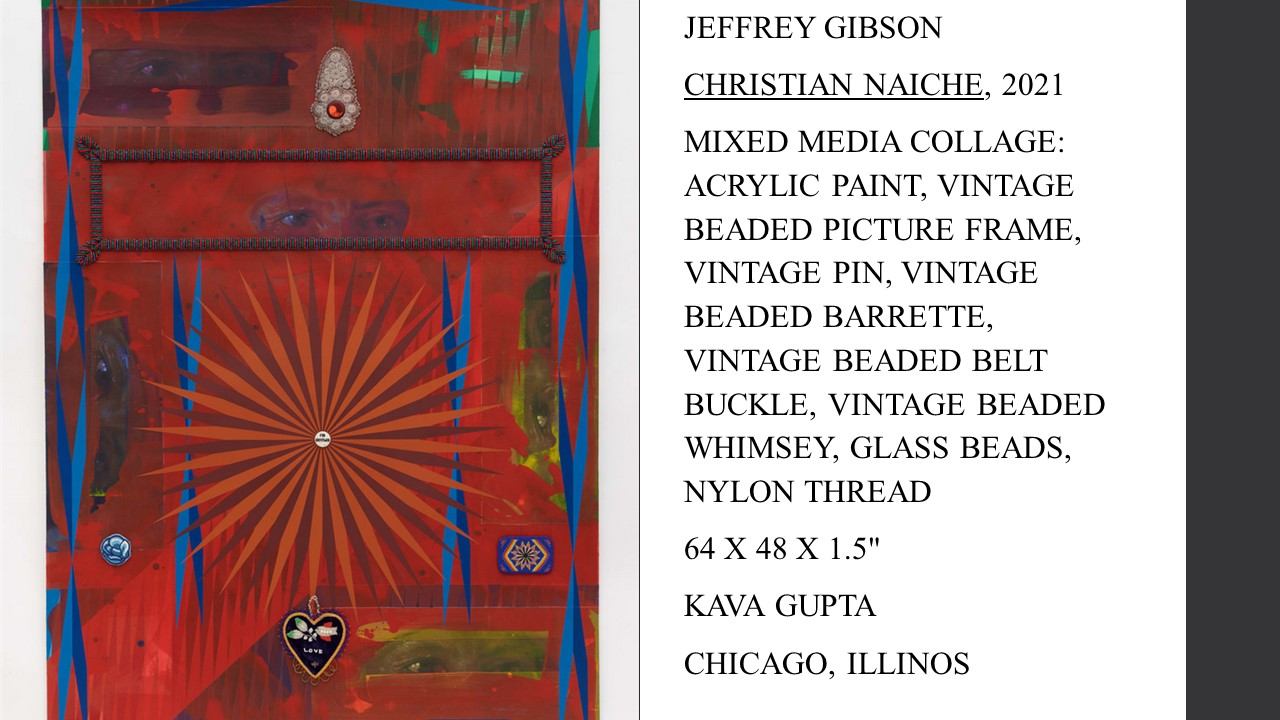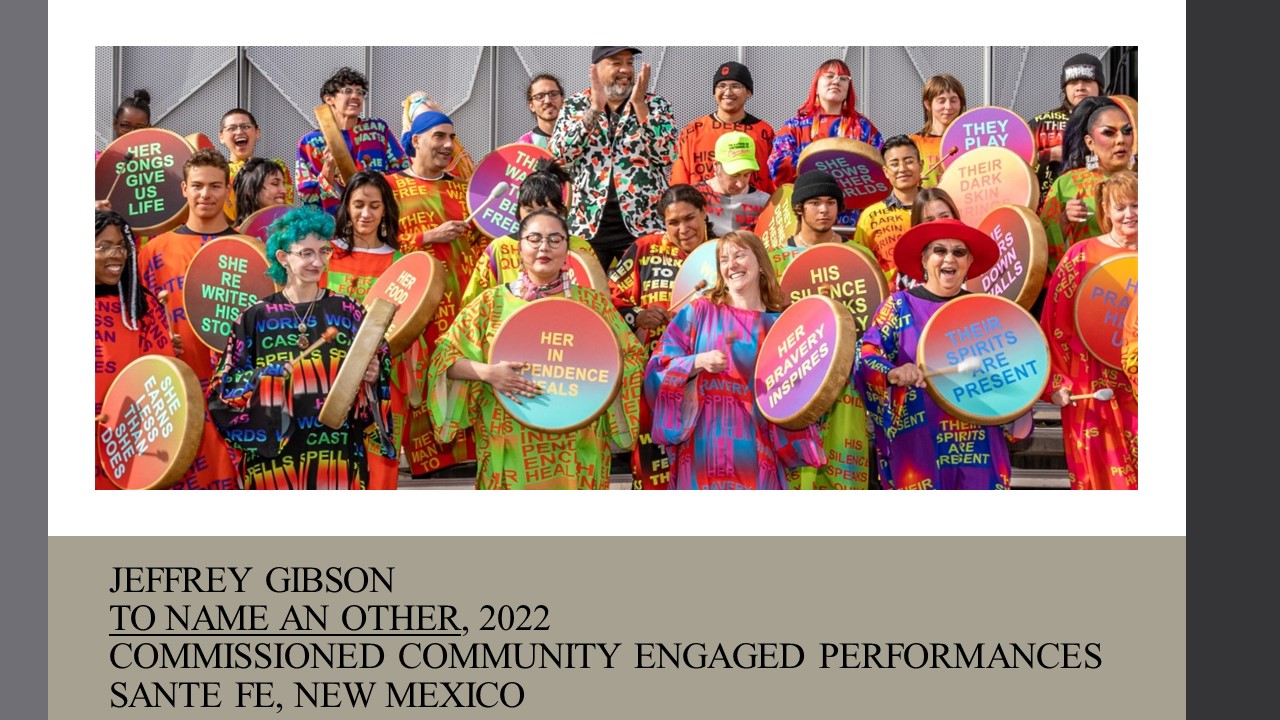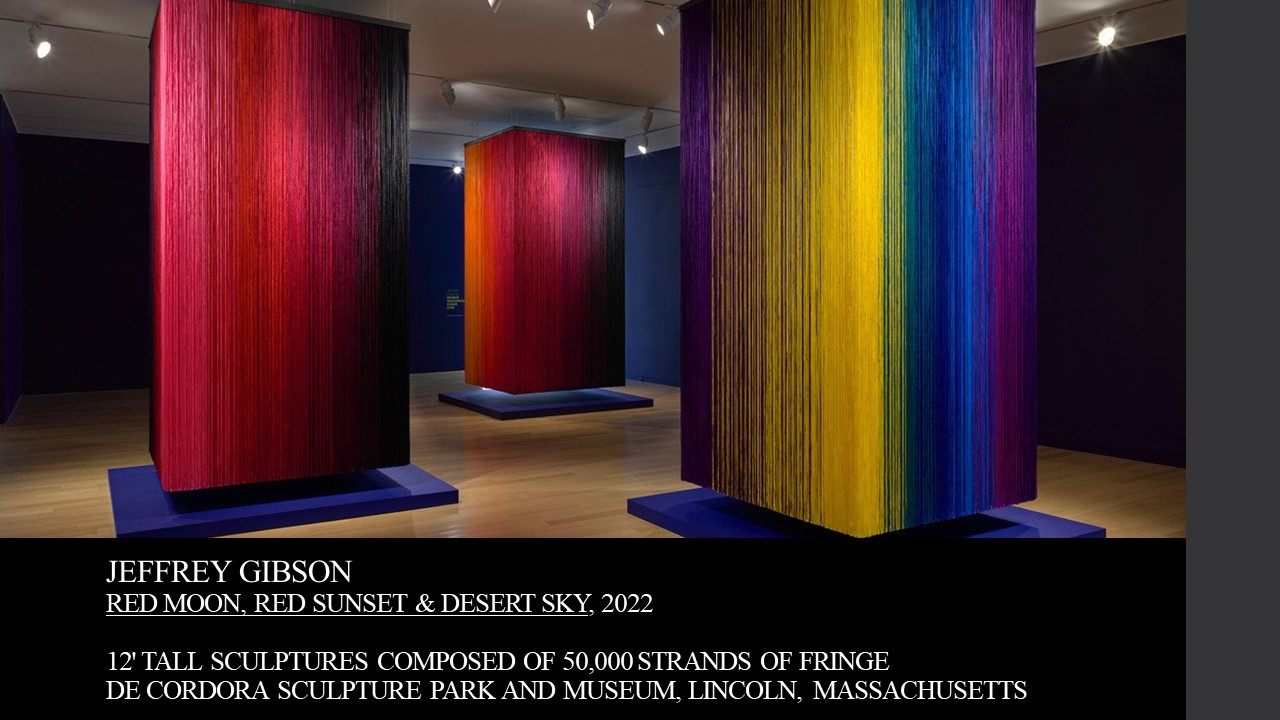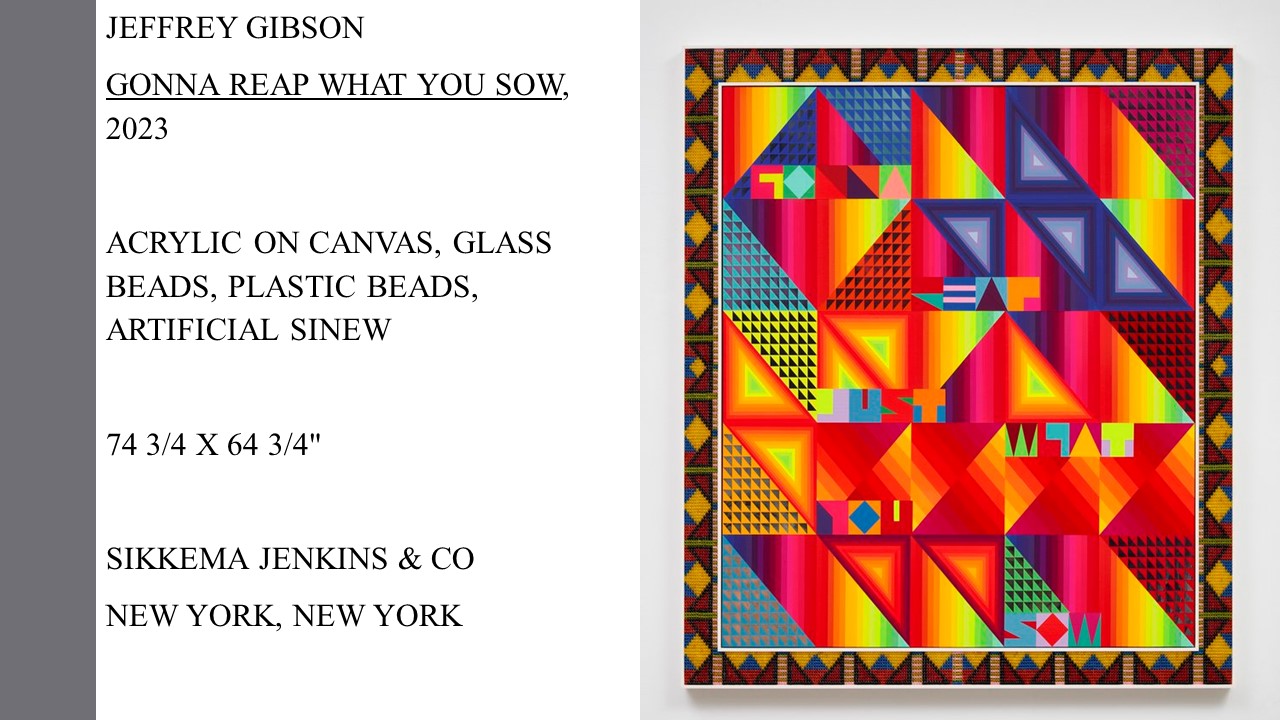Jeffrey Gibson
Jefferey Gibson understands multiplicity and how to take divergent pluralities and transcend their differences. He is a multidisciplinary artist and craftsman working in painting, sculpting, installation art, performance, and video. His heredity is Native American from two tribes: both Choctaw and Cherokee lineage. He grew up in Germany, South Korea, and the United States. He studied art in London and Chicago. And he is gay. Before moving to New York, he showed his work in England, Norway, and Spain. He has made it his life’s work to break down the collective perspective and allow specific and individual histories to emerge. This pertains more to objects and technical processes than to detailed biographies of people. Gibson believes we should challenge any restrictive role. As he said, “I believe that each person is so singularly unique that we/they inherently challenge any perspective that attempts to define people by specific names and titles.” To dichotomize is to divide, and competition usually follows, which causes judgement. Transcending duality and attaining a world of oneness and authenticity is necessary if we want to live in peace and harmony.
Gibson’s work encompasses elements of club culture, fashion, music, politics, literature, and abstract art. These mashups began in grad school when he had an impulse to mix contemporary art with his heritage. He combined it, flattened it, stretched, and reshaped it. This understanding of flexibility showed him he did not have to think linearly. By jamming things together, he created his own bridges. For example, in Light of Dawn, Midday and Dusk, his stained-glass windows with Lyn Hovey created a mashup of abstract art and Native American iconography for Wellesley College. With the added performative art of dance, Once You Enter My House it Becomes Our House, the sculpture becomes a mashup of music, culture, fashion, and art.
While dealing with personal issues, he discovered boxing to release energy and process emotions. Over months of training, the punching bag became a metaphor for any problem he was working with, as in his 2014 SCAD exhibition named a Kind of Confession. Each punching bag had its own problem embroidered into the bag, as well as the brand name of the bag. Even today, among his fifty bags, he continues this routine with his bag named Don’t Give Up. Between the slides below, you can see how urgency and anxiety has given way to feelings of composure, suggesting more thoughtful articulation of ideas.
Gibson’s beaded sayings express political statements. What We Want What We Need is a Public Enemy lyric. Thematically, song lyrics are an unsanctioned appropriation of popular culture, which references popular culture’s unsanctioned appropriations of Native American imagery and regalia for decades. Gibson forges a multifarious practice that redresses the exclusion and erasure of indigenous art traditions from the history of Western art.
A critical development in Gibson’s practice arrived with the appropriated figurative imagery of Native American heroes like Chief Black Coyote and Christian Naiche. These works reflect Gibson’s meditations on how cultures ponder history as he mashes up those ideas with literature, memory, politics, myth, and material meaning.
Gibson said that he often begins a new body of work with a month of experimentation and research. It opens new directions for current and upcoming projects. He likes to set up parameters so that he won’t second guess himself. He uses his intuition as a strategy for remaining consciously present. You can see his newest body of work at the La Biennale di Venzia this summer of 2024 as he represents the United States on the international stage.
You can see more of Gibson’s work at his galleries, which include Sikkema Jenkins & Co., Robert Projects LA, and Stephen Friedman Gallery.
PLEASE SEE PORTFOLIO BELOW
